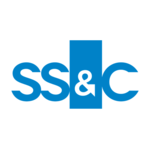Description

QuickFMS

SeaMind
Comprehensive Overview: QuickFMS vs SeaMind
QuickFMS Overview
a) Primary Functions and Target Markets
QuickFMS is a cloud-based facilities management software designed to streamline various aspects of real estate and facility management. Its primary functions include:
- Space Management: Helps organizations efficiently utilize their physical space and manage occupancy.
- Asset Management: Tracks and manages assets to ensure proper maintenance and cost control.
- Lease and Property Management: Assists in handling lease agreements and property-related financial matters.
- Maintenance Management: Facilitates scheduled maintenance and repair activities to enhance operational efficiency.
- Help Desk Management: Provides a platform for managing customer queries and service requests.
Target Markets: QuickFMS caters to diverse sectors such as corporate offices, healthcare, education, manufacturing, and retail. The software is particularly beneficial for facility managers, real estate administrators, and corporate real estate professionals.
b) Market Share and User Base
While QuickFMS competes in the facilities management software market, exact figures regarding its market share and user base are not typically disclosed in public sources. As a cloud-based solution, its user base is globally distributed, especially among mid-sized to large enterprises looking for improved facilities management solutions.
c) Key Differentiating Factors
- Ease of Use: QuickFMS focuses on providing an intuitive user interface that simplifies facility management tasks.
- Customization: Offers customizable modules tailored to specific business needs and sectors, allowing greater flexibility.
- Cloud-based: Offers the benefits of cloud computing, such as scalability, remote access, and reduced IT infrastructure costs.
SeaMind Overview
a) Primary Functions and Target Markets
SeaMind is a business management solution that primarily focuses on offering IoT-based solutions and data-driven insights for industries that rely heavily on data management and real-time monitoring. Its primary functions include:
- IoT Integration: Facilitates the integration of IoT devices for data collection and monitoring.
- Data Analytics: Offers robust data analytics tools for real-time data processing and decision-making.
- Automation and Control: Provides automation of various processes leading to increased operational consistency and efficiency.
Target Markets: SeaMind targets industries such as manufacturing, logistics, and supply chain, as well as any sector that benefits from IoT integration and data analytics such as smart cities, healthcare, and energy management.
b) Market Share and User Base
Similar to QuickFMS, specific market share and user base details for SeaMind are often proprietary. However, its relevance is growing in sectors that emphasize smart technologies and real-time data management, particularly among enterprises adopting IoT-enabled solutions.
c) Key Differentiating Factors
- IoT Focus: SeaMind is heavily oriented toward IoT applications, making it distinct in its ability to handle IoT device communication efficiently.
- Real-time Data Processing: Equipped with advanced analytics capabilities for processing data in real-time, crucial for fast-paced environments.
- Industry-Specific Solutions: Offers solutions that are finely tuned to cater to specific industry needs, particularly sectors relying on heavy-duty data analytics.
Comparison and Conclusion
QuickFMS and SeaMind, while operating in overlapping fields of business management, serve distinct niches based on their core functionalities and market focuses. QuickFMS is more traditional in its approach to facilities management, offering comprehensive solutions for estate and asset management. SeaMind, on the other hand, emphasizes cutting-edge IoT and data analytics capabilities, catering to industries with a strong focus on technological integration and real-time monitoring.
Their adoption would depend on organizational needs: businesses seeking robust facility management would lean towards QuickFMS, whereas those in need of advanced IoT-integrated solutions would likely find SeaMind more appealing.
Contact Info

Year founded :
2004
+1 949-873-5100
Not Available
India
http://www.linkedin.com/company/quickfms

Year founded :
Not Available
Not Available
Not Available
Not Available
http://www.linkedin.com/company/seanind-pte-ltd
Feature Similarity Breakdown: QuickFMS, SeaMind
To provide an effective feature similarity breakdown for QuickFMS and SeaMind, we can consider common aspects and highlight distinct elements of each product.
Core Features in Common:
-
Facilities Management:
- Both QuickFMS and SeaMind offer facilities management solutions that help organizations optimize the use of their physical spaces, manage occupancy, and oversee facility operations.
-
Asset Management:
- Both platforms include features for tracking and managing assets, which can be critical for maintaining equipment and resources efficiently.
-
Space Management:
- They provide tools for managing floor plans and space utilization, allowing businesses to plan and allocate space effectively.
-
Maintenance Management:
- Maintenance scheduling and management are core capabilities, assisting in tracking maintenance tasks and ensuring timely repairs and servicing.
-
Reporting and Analytics:
- Both tools offer reporting and analytics features that generate insights into facility operations and help in decision-making.
User Interface Comparison:
-
QuickFMS:
- Known for its intuitive and user-friendly interface that allows users to easily navigate through various modules without needing extensive training.
- It offers customizable dashboards, providing users the ability to tailor their visual experience to specific roles or preferences.
-
SeaMind:
- Also emphasizes a user-centric design but might have different visual elements and layout styles compared to QuickFMS.
- SeaMind might focus on providing a seamless integration experience with existing systems, possibly requiring a slightly steeper learning curve for new users compared to QuickFMS.
Unique Features:
-
QuickFMS Unique Features:
- Often integrates with a wider variety of third-party applications, providing a more extensive range of customization and integration options for users.
- It may also offer more specialized modules such as real estate management or strategic planning tools tailored to corporate needs.
-
SeaMind Unique Features:
- SeaMind might include advanced AI-driven analytics tools that provide predictive insights and enhanced data visualization options.
- It could offer specific industry-focused solutions that cater to sectors like healthcare, education, or manufacturing with specialized requirements.
In summary, while QuickFMS and SeaMind share several core features related to facility and asset management, they may have differences in their user interface design and distinctive features that cater to specific needs or industries. Always consider the specific requirements and priorities of your organization when choosing between these platforms.
Features

Not Available

Not Available
Best Fit Use Cases: QuickFMS, SeaMind
QuickFMS and SeaMind are software solutions designed to cater to specific needs within various businesses and projects. Here's a breakdown of their best fit use cases:
a) QuickFMS
Types of Businesses or Projects:
-
Facilities Management Companies: QuickFMS is ideally suited for businesses that require efficient management of large facilities. It helps in tracking usage, maintenance, and allocation of space.
-
Real Estate Firms: Companies dealing with multiple properties can benefit from QuickFMS to manage space efficiently, oversee occupancy, and optimize resource allocation.
-
Corporate Offices: Medium to large corporations that need to manage their own office spaces, including meeting room bookings, asset management, and maintenance coordination.
-
Educational Institutions: Schools, colleges, or universities that need to manage campus facilities, classrooms, and other resources can find QuickFMS beneficial.
-
Healthcare Facilities: Hospitals and clinics can use QuickFMS to manage their extensive facilities, ensuring maintenance and resource allocation are handled effectively.
b) SeaMind
Scenarios for Preference:
-
Data-Driven Projects: SeaMind, with its focus on data analysis and visualization, is well-suited for projects that require in-depth data processing, pattern recognition, and predictive analytics.
-
Research and Development: Organizations involved in scientific research or product development can use SeaMind to analyze test results, monitor trends, and derive actionable insights.
-
Marketing Firms: Agencies that need to handle large sets of consumer data to target marketing more effectively will find SeaMind’s analytics capabilities advantageous.
-
Financial Services: Companies in the financial sector that need to assess risks, predict market trends, and develop investment strategies can benefit significantly from SeaMind.
-
Supply Chain Management: Businesses that need to optimize supply chain operations through data analysis for improved efficiency and reduced costs may prefer SeaMind.
d) Catering to Different Industry Verticals or Company Sizes:
-
Industry Verticals:
- QuickFMS is broadly used across real estate, corporate management, education, and healthcare sectors due to its focus on facility management.
- SeaMind, on the other hand, spans industries that are heavily reliant on data analytics such as marketing, finance, research, and supply chain management.
-
Company Sizes:
- QuickFMS can be tailored to both medium and large enterprises that have significant facilities to manage. It might be cost-prohibitive for small businesses unless they have substantial facility needs.
- SeaMind caters to companies of various sizes that prioritize data analytics. While smaller startups or firms might use it to gain competitive insights, larger organizations leverage its capabilities for extensive data processing and strategic planning.
Overall, QuickFMS and SeaMind serve distinct niches and industries, with the former focusing on facility management and the latter on data analytics and insights, making them suitable for different contexts based on the primary needs of the business or project.
Pricing

Pricing Not Available

Pricing Not Available
Metrics History
Metrics History
Comparing teamSize across companies
Conclusion & Final Verdict: QuickFMS vs SeaMind
To provide a comprehensive conclusion and final verdict on QuickFMS and SeaMind, let's first evaluate each product based on the aspects you've outlined.
a) Best Overall Value
QuickFMS and SeaMind are both robust facility management solutions, but they cater to slightly different needs and organizational sizes.
-
QuickFMS: Known for its comprehensive suite of features, QuickFMS typically appeals to businesses looking for a broad range of facility management tools integrated into one platform. Its modules cover space management, asset tracking, maintenance management, and more, making it ideal for mid-sized to large organizations needing extensive resource control.
-
SeaMind: Generally focuses on scalability and ease of use, making it more suitable for smaller businesses or operations looking to scale effectively. SeaMind offers innovative features but may not provide as extensive support in certain areas compared to QuickFMS.
Conclusion for Overall Value: QuickFMS generally offers the best overall value for larger organizations needing a full-featured facility management suite. Conversely, SeaMind can be more cost-effective and functional for smaller businesses or those prioritizing flexibility and growth.
b) Pros and Cons
QuickFMS
-
Pros:
- Extensive range of integrated features.
- Suitable for larger businesses with complex facility management needs.
- Offers robust data analytics for informed decision-making.
- Provides comprehensive reporting capabilities.
-
Cons:
- Can be expensive for smaller businesses.
- Potentially overwhelming number of features for companies with simpler needs.
- Implementation might require significant time and resources.
SeaMind
-
Pros:
- User-friendly interface, straightforward implementation.
- Cost-effective for smaller to mid-sized businesses.
- Scalable features align well with business growth.
- Offers innovative solutions tailored to specific industries.
-
Cons:
- May lack depth in certain advanced facility management areas.
- Not as customizable as QuickFMS for large enterprise needs.
- Might require third-party integrations for full functionality in some cases.
c) Specific Recommendations
-
Assess Organizational Needs: Businesses should perform a thorough needs assessment to understand which features are truly necessary. Larger and complex organizations may benefit from QuickFMS due to its wide-ranging capabilities, while smaller enterprises might prefer the simplicity and cost-effectiveness of SeaMind.
-
Consider Scalability: For rapidly growing businesses, SeaMind's scalable solutions could provide a better match. If growth requires more intricate facility management approaches, then eventually transitioning to or starting with QuickFMS might prove beneficial.
-
Budget and Resources: Evaluate your budget constraints and resource availability. QuickFMS could demand higher upfront costs and more in-house resources for maintenance. If a lighter solution can fulfill your current needs, SeaMind might be the appropriate choice.
-
Trial Period and Demos: Both products are likely to offer trial periods or demo versions. Use these opportunities to get hands-on experience with each product and gauge their user-friendliness and whether they meet your specific requirements.
Final Verdict
Ultimately, the decision between QuickFMS and SeaMind boils down to the size, needs, and budget of your organization. QuickFMS offers an unparalleled comprehensive suite for larger businesses with complex requirements, while SeaMind provides a more straightforward, scalable, and cost-effective solution for smaller organizations or those looking for streamlined facility management tools. Consider your long-term business goals and operational demands when making your choice.
Add to compare
Add similar companies



